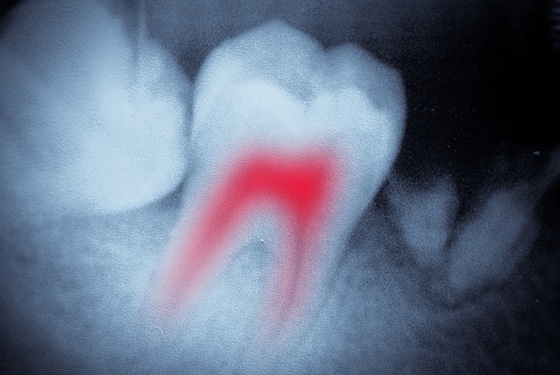A root canal treatment is the process of repairing and saving a decayed or infected tooth by removing dead or infected nerves and pulp from its root canal. This is a popular procedure at Greenspoint Dental and can be completed easily at our Houston office.
This process is also known as endodontic treatment. Infection in the canal may be a result of germs accessing the tooth through cracks, deep cavities or flawed fillings. The tooth is then said to be abscessed as a result of the pulp infection, which may lead to tooth pain and swelling. Therefore, the pulp has to be removed and the root canal cleaned and sealed, to avoid further damage to the tooth.
ADVANTAGES OF A ROOT CANAL
- Little or no pain experienced during the procedure
- High success rate
- Saves your tooth from being extracted
ROOT CANAL TREATMENT
Numbing and placement of a rubber dam: Your dentist will give you a local anesthetic, and will then place a rubber dam around your tooth to protect it from getting a bacterial infection from your saliva.
Accessing the root canal: Your dentist will create an opening in your tooth by using a dental drill to access the damaged pulp. The resulting hole extends right into the pulp chamber. For front teeth, the opening is created on their backside, while for posterior teeth, the opening is created on the chewing surface. Apart from the portion of tooth that is drilled out for access, fragile tooth parts, decay, and fillings are also removed.
Cleaning and enlarging the tooth’s root canal: A dentist uses fine root canal files to clean and shape the root canal and pulp chamber. This process eliminates all toxins, bacteria, nerves and related debris in the tooth’s root canal. During the enlarging process, the dentist uses a number of files that have slightly larger diameters, in order to create a shape that will allow for filling and sealing of the root canal.
Filling and sealing of the root canal: The cleaned and shaped root canal is filled and sealed. Most commonly, gutta-percha, a rubber compound, is used as the filling material. A root canal paste sealer is used together with this filling material. Filling and sealing can either take place immediately after cleaning the root canal or after some time, usually a week or so.
This treatment can be carried out in either one or two appointments. Afterwards, the tooth may be tender for a week or so. Swelling and severe pain are not to be expected though.
Contact Greenspoint Dental today to learn more about how our root canal treatments can help save your teeth today.
ROOT CANAL TREATMENT
Numbing and placement of a rubber dam: Your dentist will give you a local anesthetic, and will then place a rubber dam around your tooth to protect it from getting a bacterial infection from your saliva. Accessing the root canal: Your dentist will create an opening in your tooth by using a dental drill to access the damaged pulp. The resulting hole extends right into the pulp chamber. For front teeth, the opening is created on their backside, while for posterior teeth, the opening is created on the chewing surface. Apart from the portion of tooth that is drilled out for access, fragile tooth parts, decay, and fillings are also removed. Cleaning and enlarging the tooth's root canal: A dentist uses fine root canal files to clean and shape the root canal and pulp chamber. This process eliminates all toxins, bacteria, nerves and related debris in the tooth's root canal. During the enlarging process, the dentist uses a number of files that have slightly larger diameters, in order to create a shape that will allow for filling and sealing of the root canal. Filling and sealing of the root canal: The cleaned and shaped root canal is filled and sealed. Most commonly, gutta-percha, a rubber compound, is used as the filling material. A root canal paste sealer is used together with this filling material. Filling and sealing can either take place immediately after cleaning the root canal or after some time, usually a week or so. This treatment can be carried out in either one or two appointments. Afterwards, the tooth may be tender for a week or so. Swelling and severe pain are not to be expected though. Contact Greenspoint Dental today to learn more about how our root canal treatments can help save your teeth today.

Schedule an Appointment with us